Disclosure
This product was kindly sent to me by Easypix in order to review and share my experience and thoughts on using it. The company does not claim to review this article prior to its’ release and everything that follows is a totally honest review. So let’s get into it.
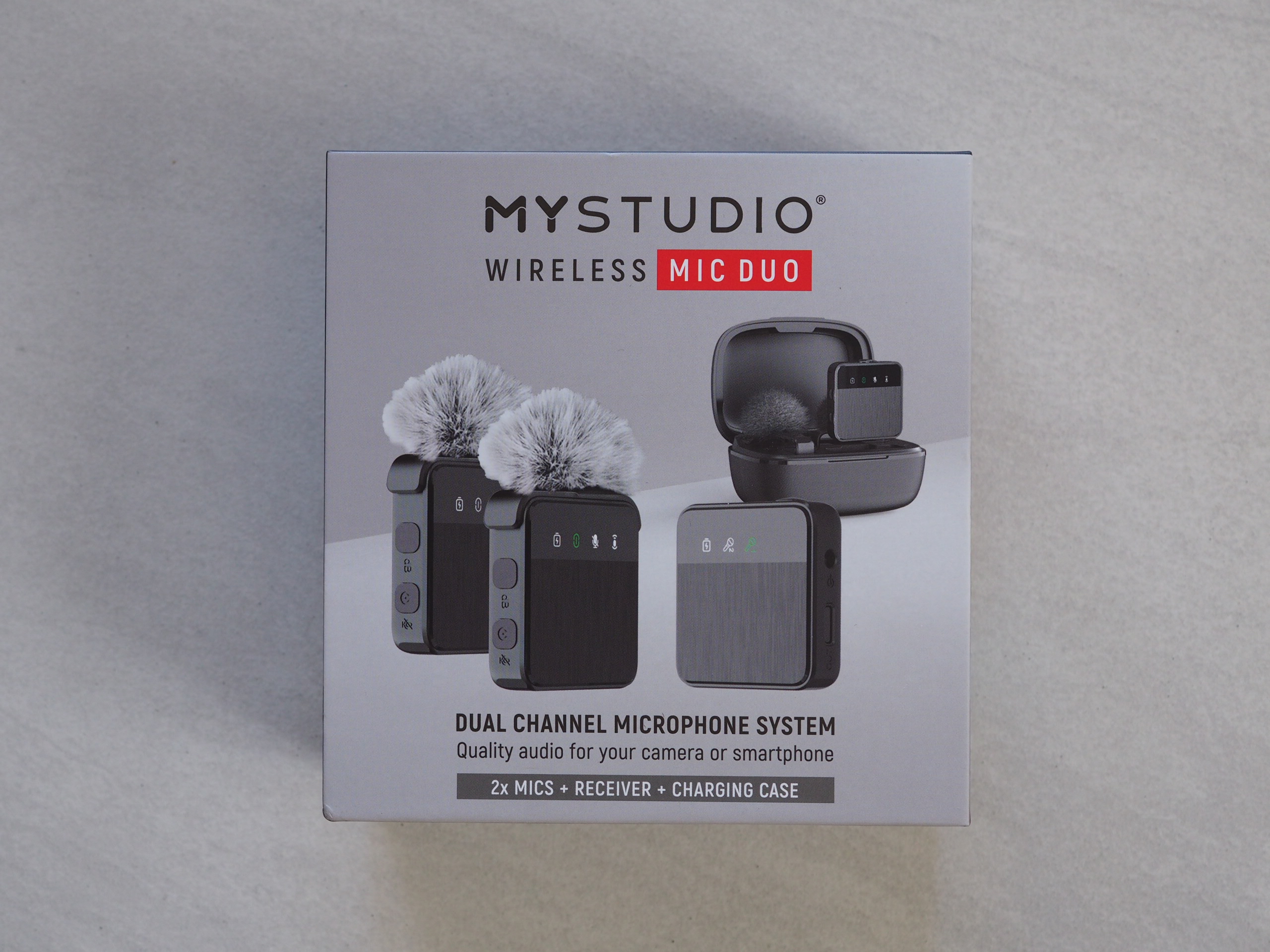
Unboxing & first thoughts
The Easypix Wireless Mic Duo comes in a small colorful package that actually contains all the necessary accessories needed to work right out of the box. The charging case includes the 2 transmitters and the single receiver, as well as the 2 wind muffs. The other accessories are the 3,5mm TRS to TRRS audio cable, the USB-C to USB-C audio cable and the dual USB to USB-C cable. The dual USB to USB-C cable can be used to either charge the transmitters and/or receiver unit, in whichever combination, or the charging case itself. The case is made of hard plastic and seems to be durable. Its size is small for those who like to have a small footprint when working in public areas and can literally fit in a jacket pocket.
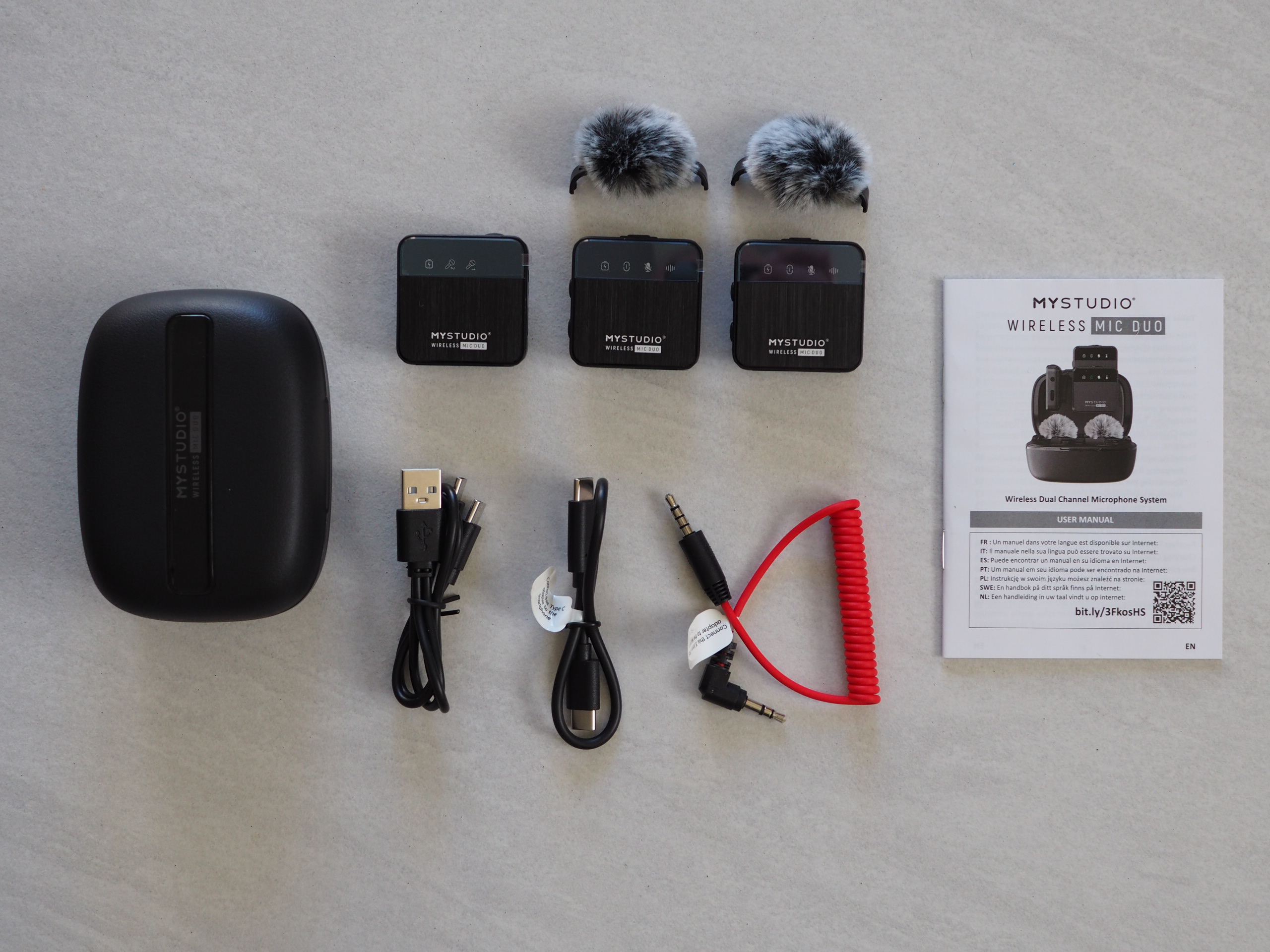
The star of the show is obviously the charging case with the contained units. The transmitters and the receiver, have distinct compartments that fit snugly and are held in place with the use of magnets. All units have charging contacts on the bottom, so they are able to be charged from the battery contained in the case. Once you place them in the case, the magnet ensures a secure connection and the charge starts after a second. Both the receiver and the transmitters are colored gray. Their upper part, where the illuminated indicators are located, is black in order to achieve higher contrast and they are all equipped with rotating mounting clips.
Features and specs
As the name implies, the Easypix Wireless Mic Duo, is equipped with two transmitters and one receiver. This comes in handy for single and dual recordings. The single receiver on the other hand is all you need, for exporting the audio to your recording device. Take into consideration that the units do not offer any kind of on-board recording, so you will definitely need an external recording device, or a camera with an audio input, in order to capture audio.
The connection between the transmitters and the receiver is made in GFSK modulation, in the 2,4GHz region and the maximum transmit power is limited to 8,21dBm, which is roughly 6,6mW. Although all units will be charged from the charging case in most cases, they also have charging ports on them, as an alternative way of recharging, which is nice in terms of redundancy.

TRANSMITERS
The transmitters are very small and lightweight with their dimensions and wight being 4x4x1cm and 23gr respectively. They feature an onboard mic as well as an external input for a wired lav mic, which is one of the most versatile features of the Wireless Mic Duo. While the transmitters are very stylish and good looking, there will be times that you will want them to be unseen on camera and that’s when the external lav mic will come in handy. This is a feature that is not a standard even in pricier wireless mics. The on board mics feature an omni directional polar pattern, which is the most useful and also common for lav mic applications. It is worth noticing that the on board mic can be muted with the push of the mute button and the mic frequency range spans from 20Hz to 10KHz. The on board battery will provide up to 10 hours of power, which will be more than enough for most case scenarios.The transmitters can be easily adjusted in terms of gain. With the push of a button, you can flexibly set your gain in 3 distinct levels. Level 1 is ≈40db, level 2≈50db and level 3≈70db. When cycling through them, the green LED on the transmitter will flash one , two or three times respectively. Both transmitters are equipped with charging contacts at the bottom, so they will start charging immediately when placed in the charging case.Lastly there on the back of the transmitters there are small spring loaded clips, for mounting them on clothing.

In the manual there are 3 tables explaining the different indicator status for the transmitters, receiver and charging case, so for more details you can download the full manual at
https://www.easypix.info/download-manuals/download/mystudio-mic-duo/ , in one of the 9 different languages available.

RECEIVER
The receiver has 2 different outputs, one analog 3,5mm TRS output and a digital USB-C output. This offers increased flexibility for the user, as some will find themselves using different types of recording devices. Smartphones, tablets and computers might be easier to be paired with the USB-C cable, while audio recorders and digital cameras might be equipped with analog audio inputs, like the TRS. On the receiver there are only 3 indicators: the Power/battery indicator and Mic1 and Mic2 connection indicators. So whenever a mic indicator is light, you can be positive there is an established connection between a transmitter and the receiver. It is also equipped with the same mounting clip we see on the transmitters. The integrated battery will provide power for up to 12hrs, which, as I mentioned for the transmitters, will be more than enough in most cases. It also has charging contacts at the bottom of the unit for charging via the charging case, as the transimtters.

CHARGING CASE
The charging case is made out of hard plastic and seems to be durable enough to handle some hard use. The lid is magnet secured in order to close and stay closed. It also has a built in battery of 2200mAh, which will provide 1 full charge and maybe on full more. Now, if you combine this recharging capability, with the previously mentioned battery life of both the transmitters and the receiver, you can easily understand that you have at your disposal, more useful battery life than you will ever need. In the case the units are tightly nested and hold in place thanks to magnets. The exposed contacts will establish a secure connection whenever a receiver or transmitter is placed in the case and the charge will begin in no time. It is nice that Easypix included the wind muffs not only as an accessory for the transmitters, but the fact that it is also able to be placed in the charging case, so there is no way of forgetting that time you will be shooting in a windy situation. The case itself, will can be charged by the included USB-C cable, so even if the cable is quite popular, you won’t have to search for one in case you don’t have one laying around. The input is 5VDC/1A and that allows a relatively quick charge, depending on the battery level of course. The same applies for the included units, as in most cases I found to be recharged quickly, but they were never fully depleted.
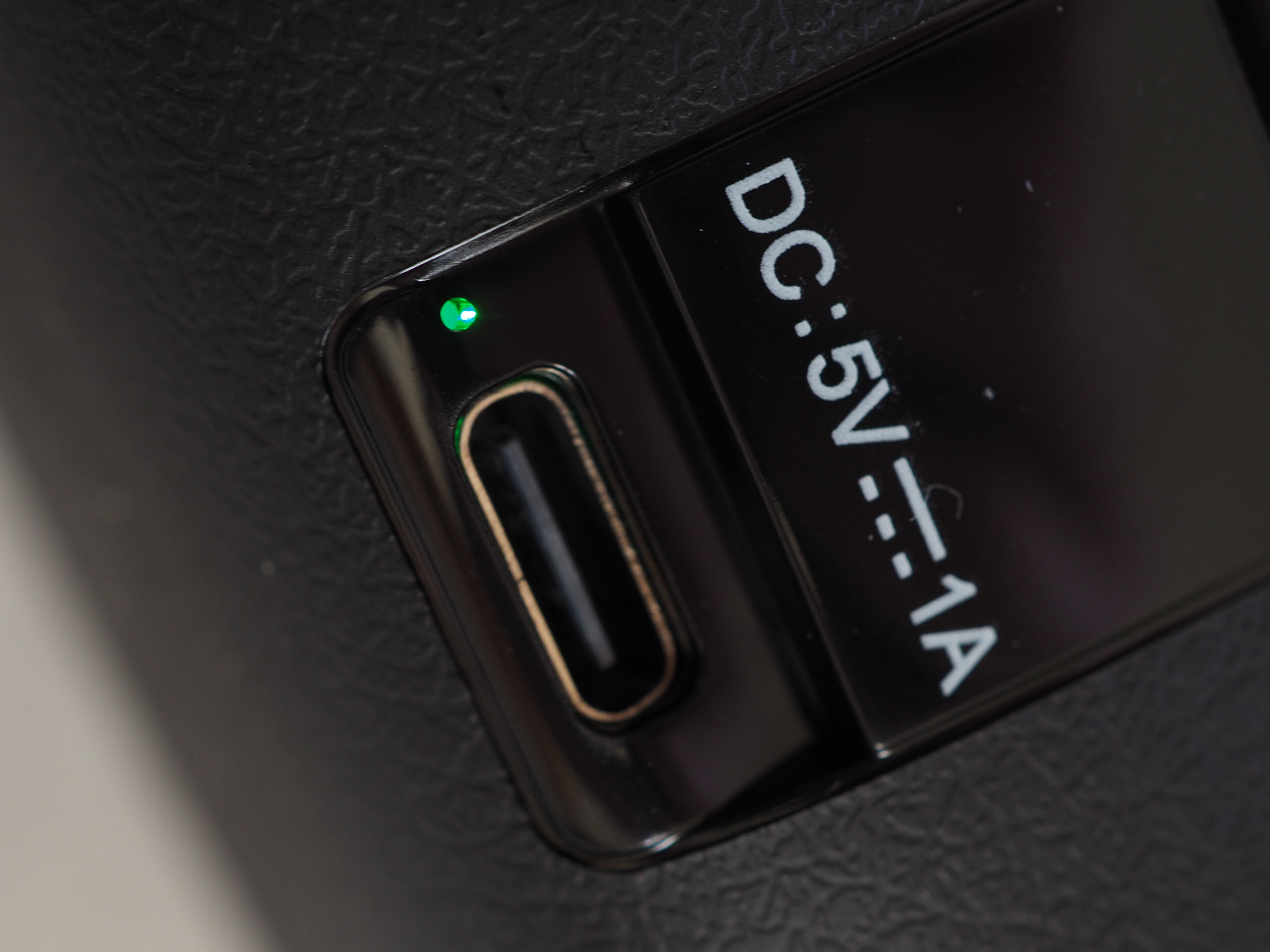
My background
Although my origins lay in photography, it was a slow process until video became essential part of my work. When that happened I could not totally appreciate the necessity of good audio on my videos, but as I evolved I became aware of it. As they say, the audio is half the viewing experience after all.
So after investing in audio recorders and wired mics, there is a time and place for wireless gear for capturing audio. There are quite a few wireless options in the market but while some of them are tried and true, they cost many times more than the Easypix Wireless Mic Duo kit. That’s why I wanted to give it a try and see how it holds up to the competition. With that said, we have to take into consideration that this 2,4GHz wireless mic category, is mostly oriented for consumer/prosumers applications. Professional applications won’t rely on those frequency band as they are heavily packed, especially in populated areas, on the contrary they will utilize other frequencies in the UHF frequency spectrum. So with that in mind, you should not compare this wireless mic kit with other UHF wireless mics, as they do not compare like apples to apples.
In use
The thing I liked the most when using the Wireless Mic Duo, is the small form factor. It is tiny and the fact that it comes in a convenient case which acts as the charging station makes it even more versatile. I found myself carrying it a lot in my backpack, from shoot to shoot, without having the anxiety to put it in a hard case of some sort in order to prevent damage or protect it any further. The hard case does an amazing job at it. I made extensive use of it in most case scenarios and came up with the following results.
Most users will probably find themselves using it in talking head sessions, vlogging, and podcast. Some of these applications will include video shooting while others won’t. But in all situations the wireless nature will allow for increased freedom of movement. Talking head sessions are generally static, but a couple of steps right or left might give a more dynamic feel to the shot. Little details like these increase production value and is a step forward to improving your shoots.
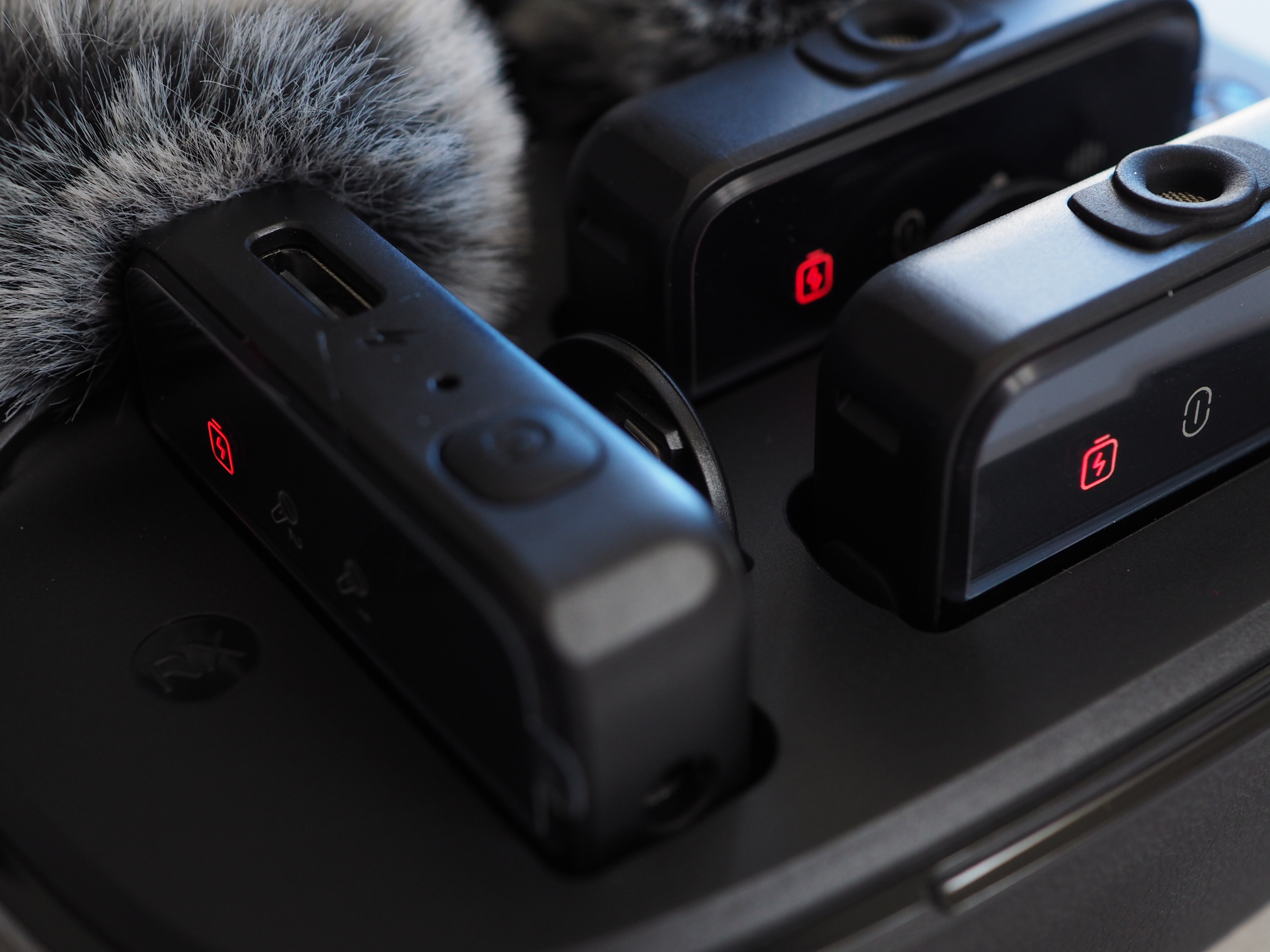
When vlogging, having cables running from the lav mic to the camera, is obviously cumbersome and might also introduce some handling noise to the recording, but can be done if there is no other option. With the use of a wireless system, these problems are completely eliminated. So upgrading to a wireless set might not improve audio quality, but will enhance user experience and workflow.
Podcasts are also static most of the time, but if you have strong feelings against mics mounted on stands that are visible to the camera, then the small form factor of the Wireless Mic Duo might be a better solution for you. Such a small and classy lav mic will only catch the attention of the viewer only the first couple of seconds the see them on screen. If they even see them, in case there is a video version of the podcast, because if you are only recording audio, then this is not even a problem.
In case you find yourself using it for filmaking, the small size will give you a tone of options for hiding it close to your actors in order to capture their voices clearly. Using it as a plant mic will definitely expand your shooting capabilities. Being so small it can be placed behind a coffee mug, a tv remote, a book or even a plant, as the name implies. In all those case the goal is to have the clearest possible recording of your talents’ voice. Especially if you are a solo filmaker without a boom operator on set, this is a kind of set it and forget kind of approach in order to get the job done.
Other applications could include recording voice over even foley. Sure you won’t get that deep radio announcer voice large diaphragm mics produce, but the proximity effect will work in your favor no matter the size of the capsule.

I also found that using the external lav mic gives a more polished look in the camera, if you don’t want the transmitters to be seen. You will have to be cautious though, as there are no locking mic jack inputs and excessive movement might cause connection issues.
Adjusting the gain settings is super simple and easy to use and allows for quick and precise level setting. I found myself more frequently going for a lower gain setting and amplify it in post if needed, rather than risking to record clipped audio. The ease of use comes down to the simple indicators layout, as all the information are clearly indicated and the user can be aware of the device status in a blink of an eye.
When it comes to range testing the Wireless Mic Duo, I didn’t actively tested its range. What was clear though, is that in urban areas you might run into interference problems audible in your audio. This is due to the frequency range of the kit and there is no work around. Turning off Wi-Fi routers will probably solve the problem but there might be other sources of interference out of your reach, so keep in mind that also. When I was using it outdoors, especially in less populated areas, I experienced no problem using it in ranges up to 20 meters away from my camera setup. This was made in order to get a very specific look with a telephoto lens and I think it is more than enough range for most case scenarios. I also didn’t experience any connection loss in those suburban shoots, but keep in mind the transmitter always had an unobstructed line of sight with the camera. In case it was placed on the back of the body this might result in different results.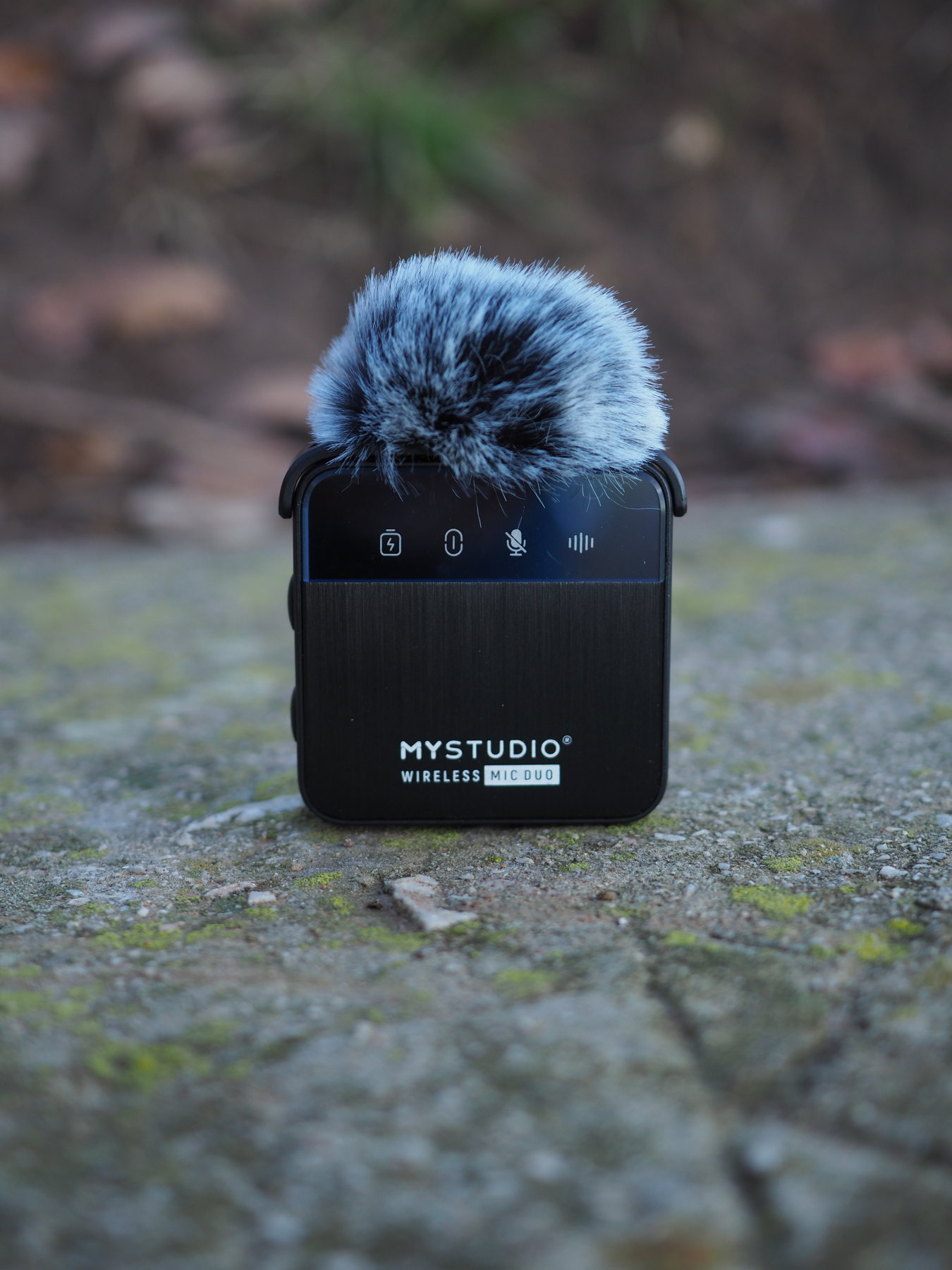
Feedback
Although I have enjoyed using and reviewing the wireless mic, I would love to see an upgraded version in the future. One of my main issues is when using both transmitters, what you get out of the receiver, is the stereo mix of the two. Meaning you get both of the transmitters audio in both channels. So even if you split the stereo track in your DAW, you cannot process the different transmitter inputs on their own. Instead of that, I think it would skyrocket its editing versatility, if you could get the signal of each transmitter, in separate channels. Let’s say the audio from transmitter No1 on the right channel and the audio from transmitter No2 on the left. That way you could indepentandly edit each one of them, as there might be loudness inconsistencies during the recording. This might be as simple as updating the firmware, but even if there has to be a wiring alternation, this could be easily achieved in the next generation of the Easypix Wireless Mic Duo.

Who is this for
Not all users have the same needs when it comes to gear. It won’t be wise for someone starting out to spend thousands of €, or get into debt, for professional gear way out of his league, or for a big production company to use consumer gear for its work. That is why different gear tiers exist in the first place.
This Wireless Mic Duo though, is a great choice for someone who works solo or with 2 people. If you wish to record a podcast or start a YouTube channel this kit will serve you great. It affordable enough for a dual transmitter kit and even if you are a solo user, you can get it and have the redundancy of a second transmitter in case the first one fails for whatever reason. The working range is adequate for most simple tasks like interview, talking head etc and the build quality is also fine for normal use. It would be especially efficient when used in places with low interference in the first place. In urban areas where Wi-Fi networks are in abundance, you might run into problems, but this has nothing to do with this specific product, but rather with the frequency range consumer and prosumer wireless mics work in general.
Conclusion
I have loved using the Easypix Wireless Mic Duo, mainly because it has been very easy to carry around and setup. The small size and weight makes it very convenient to use in conjunction with other lightweight gear and also avoid attracting attention on you when using it in public. You have to be aware of interference issues in urban areas, but when using it in more remote places, you won’t be bothered.
Being a consumer product, it performs like most competitors, but comes with a smaller price tag. This is something especially important if you are not payed for your productions, or you are just upgrading your audio gear and dipping your toes to the wireless mic category. Starting small and scaling upwards, is a tried and true method to evolve, either as a filmmaker or podcast producer etc. With the Easypix Wireless Mic Duo though, although it might seem you start small, you get more than what you pay for.
If you are interested in knowing the other products of the lineup by Easypix have a look at https://www.instagram.com/easypix.lifestyle.electronics/ or in purchasing the Wireless Mic Duo you can visit https://www.mystudio-kit.com/en/ .

